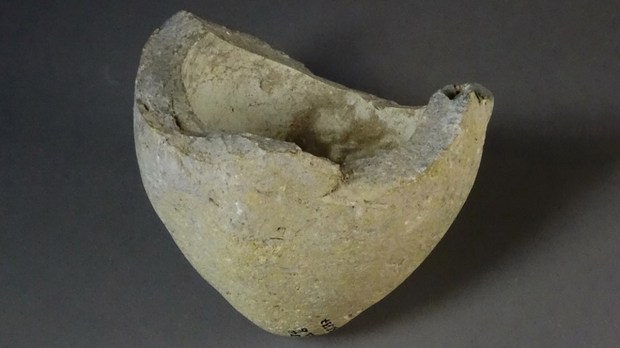Nobody expects a medieval hand grenade. Nobody but Monty Python, that is, who famously mentioned medieval explosives (the “Holy Hand Grenade of Antioch”) in their classic 1975 Arthurian legend parody, Monty Python and the Holy Grail.
Now, a team of Canadian and Australian archaeologists have found what they think is an 11th- or 12th-century hand grenade in the Armenian Gardens of Jerusalem’s Old City. This is the second Crusader-era discovery made in Jerusalem in less than a month, the previous one being an enormous stone slab marked with the centuries-old graffiti of pilgrims. It has been revealed to be the remains of the original medieval altar of Jerusalem’s Church of the Holy Sepulchre.
As Amanda Borschel-Dan explains in her article for the Times of Israel, a team of researchers led by Griffith University’s Associate Professor Carney Matheson analyzed residue found inside four spherical, grenade-like ceramic receptacles. Three of the containers, found at the site of a Crusader royal palace, were used to contain oil for food, medicine, and perfume. But the fourth one seems to have been used to store chemicals, “or may have held the chemical ingredients for an explosive device, consistent with a medieval grenade.”
Medieval grenades are not the invention of the famed British surreal comedy troupe. The study, published in PLOS One, explains that “historical accounts, like the siege of Jerusalem in 1187, report weapons consistent with grenades thrown against the city by the forces of Saladin.” After minutely testing the vessels’ residue (through several different microscopic and spectroscopic processes), the study concluded the kind of explosive material the vessel contained was not the relatively common black powder known in China and the Middle East around the 13th century, but rather a locally produced material.
Borschel-Dan notes how, in an interview with IFLScience, Matheson explained some Crusader-era Arabic texts might contain recipes for these explosives, but they are difficult to decipher: “These were secret weapons and they didn’t necessarily want to tell everyone exactly how to make them.” However, it is known these explosives included plant and animal fats. In similar vessels, researchers have found fatty acids and relatively high levels of mercury, sulfur, aluminum, potassium, magnesium, nitrates, and phosphorous.

